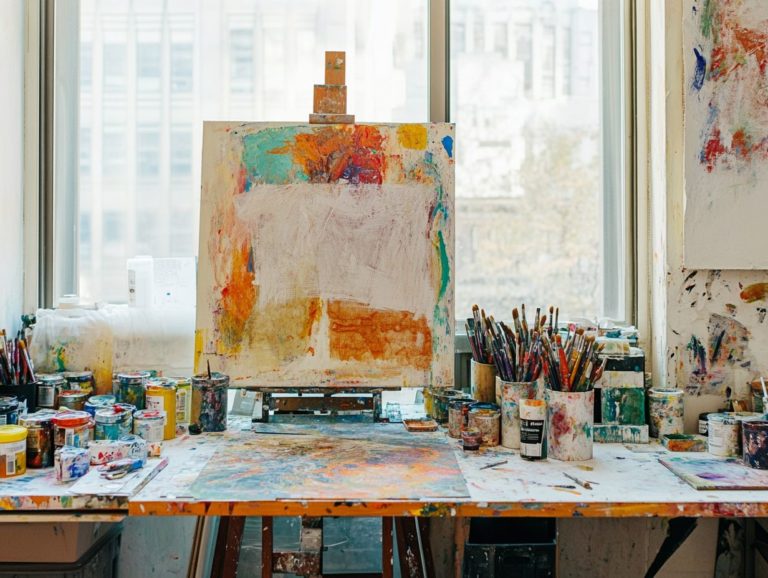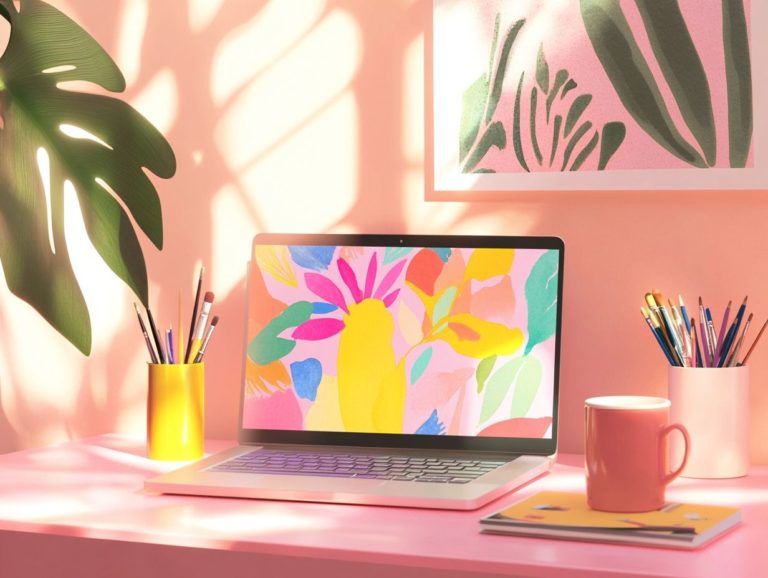How to Develop a Successful Creative Project
Creativity lies at the core of innovation, but navigating the journey from inspiration to execution can often feel intricate.
This article delves into the complexities of the creative process, simplifying it into manageable steps designed to help you transform ideas into successful projects.
From defining your goals to brainstorming and overcoming those pesky creative blocks, this guide equips you with essential strategies for sustaining creativity and assessing your success.
Whether you’re a seasoned creator or just beginning your journey, these insights will empower you to breathe life into your vision.
Contents
- Key Takeaways:
- Understanding the Creative Process
- Steps to Develop a Successful Creative Project
- Maintaining Creativity and Overcoming Challenges
- Measuring Success and Making Improvements
- Frequently Asked Questions
- What are the key steps to developing a successful creative project?
- How important is it to define the goals of a creative project?
- What are some effective ways to conduct research for a creative project?
- Why is it important to establish a timeline and budget for a creative project?
- How do you create a team for a creative project?
- How do you ensure the success of a creative project?
Key Takeaways:
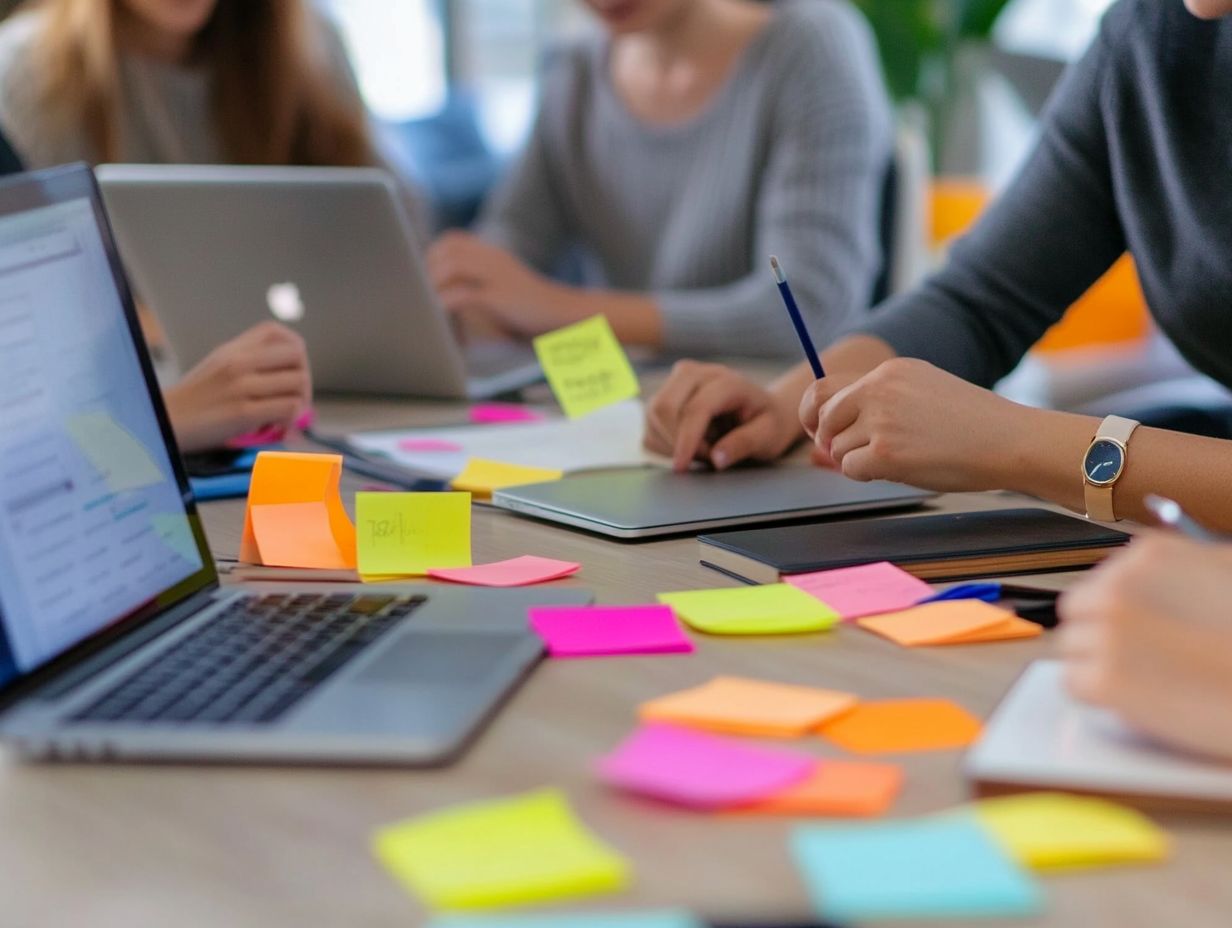
Understand the creative process by defining creativity and its phases. Follow a step-by-step approach to develop a successful creative project, including setting goals, brainstorming, planning, and executing. Maintain creativity by using strategies and overcoming challenges, and measure success by evaluating the project’s impact and making improvements for future projects.
Understanding the Creative Process
Grasping the creative process is essential for anyone embarking on a creative project, as it connects important parts like planning and teamwork. By looking into the intricacies of this process, you can adeptly navigate the phases of brainstorming, planning, and executing your vision, paving the way for successful outcomes.
This understanding sets the foundation for a project plan that embraces flexibility, manages time effectively, and involves accountability partners. This ensures that creativity thrives throughout every stage of the project lifecycle.
Defining Creativity and the Creative Process
Creativity is your ability to generate new ideas and solutions, while the creative process involves a systematic approach to harnessing that creativity through various phases. This journey goes beyond merely igniting the spark of innovation; it heavily depends on emotional energy, which fuels your passions and motivations, giving you the power to push boundaries.
Emotion plays a critical role in this dynamic it can either ignite inspiration or create obstacles that hinder your progress. To navigate these intricacies effectively, you can employ various creativity tools like brainstorming (helps generate ideas), mind mapping (visually organizes thoughts), and prototyping (creates early models). These tools help structure your thoughts and enhance clarity.
While maintaining flexibility is essential for encouraging exploration, certain constraints can also provide focus. Striking a balance between these elements can ultimately lead to a more enriched and productive endeavor.
Steps to Develop a Successful Creative Project
To transform your idea into a successful creative project, it s crucial to adopt a structured approach. Start by developing a comprehensive project plan, defining the parameters of your project, and setting clear milestones.
This solid preparation is your launchpad for success!
Identifying Goals and Objectives
Identifying clear goals and objectives is the cornerstone of any creative project, providing you with a roadmap that aligns seamlessly with client aspirations and delineates the project scope.
By employing the SMART criteria Specific, Measurable, Achievable, Relevant, and Time-bound you can effectively craft goals that resonate with the client s vision and establish a tangible framework for progress.
It s crucial to ensure that these goals are measurable throughout the project’s lifecycle; this approach facilitates regular assessments and allows for real-time adjustments, keeping the project firmly on track.
Aligning these objectives with the overall project scope guarantees that both you and the client share a unified understanding of what success looks like. This alignment fosters collaboration and enhances the likelihood of meeting deadlines and delivering the desired outcomes.
Brainstorming and Ideation

Brainstorming and ideation are essential stages in your creative process. Here, you and your team come together to generate ideas, harnessing creativity exercises and collaborative tools to ignite innovation.
These sessions can take many forms, from mind mapping and round-robin brainstorming to free writing. This allows you to explore concepts without the limitations of conventional thinking.
Effective communication is vital during this phase. It not only clarifies your thoughts but also creates an atmosphere that embraces diverse perspectives.
By incorporating digital collaborative tools, you can effortlessly share ideas and feedback in real-time. This makes it easier to capture those fleeting moments of inspiration.
This collective approach boosts creativity and strengthens team dynamics, ultimately leading to more robust and innovative solutions.
Planning and Organizing
Effective planning and organization are essential for the timely delivery of creative projects. This ensures that you meet project milestones and manage tasks efficiently.
To achieve this, consider employing tools like Gantt charts a visual tool that shows tasks over time. These tools help you and your team stay on track with objectives.
By visualizing tasks against deadlines, you can spot bottlenecks early, allowing for timely adjustments. Prioritizing tasks based on urgency and importance will streamline your efforts.
This approach fosters a more organized workflow and cultivates a collaborative environment. Every team member is aligned and aware of their responsibilities, ultimately driving the success of your project.
Execution and Implementation
The execution and implementation phases of a creative project are where you bring your plans to life. This requires careful tracking of progress to ensure that the outcomes align with your initial objectives.
To navigate these phases successfully, it’s crucial for you to establish a clear timeline and assign specific tasks to your team members. This fosters a sense of ownership and responsibility among them.
Integrating regular feedback sessions provides opportunities for course corrections. It also creates an environment rich in collaboration and continuous improvement.
Engaging an accountability partner can sharpen your focus, as they help maintain momentum and offer valuable insights. This reinforces your commitment to deadlines and quality standards.
By weaving these elements together, you can lay a strong foundation for delivering successful outcomes that meet or even exceed stakeholder expectations.
Maintaining Creativity and Overcoming Challenges
Maintaining creativity throughout a project can be quite a challenge, particularly when you encounter creative blocks and challenges in brainstorming.
Don t worry! There are exciting ways to keep your creativity flowing. It becomes essential to adopt effective strategies that will help you stay inspired and innovative.
Strategies for Staying Creative
Developing effective strategies for staying creative can significantly elevate your creative process. By utilizing creativity tools and harnessing emotional energy, you can foster true innovation.
To achieve this, consider techniques like mind mapping and brainstorming sessions for creative stimulation. Engaging in creative exercises designed to stimulate your brain can also be beneficial.
Incorporating practices such as journaling or doodling can be particularly helpful. These activities allow your thoughts to flow freely and unlock new ideas.
Creating a conducive environment is essential; surrounding yourself with inspiring visuals and sounds can enhance your emotional energy, making brainstorming sessions far more fruitful.
Don t underestimate the power of taking regular breaks to rejuvenate your mind. These pauses often lead to those enlightening ‘aha’ moments that propel your creative thinking to new heights.
Take those breaks and watch your creativity soar those ‘aha’ moments are just around the corner!
Dealing with Creative Blocks
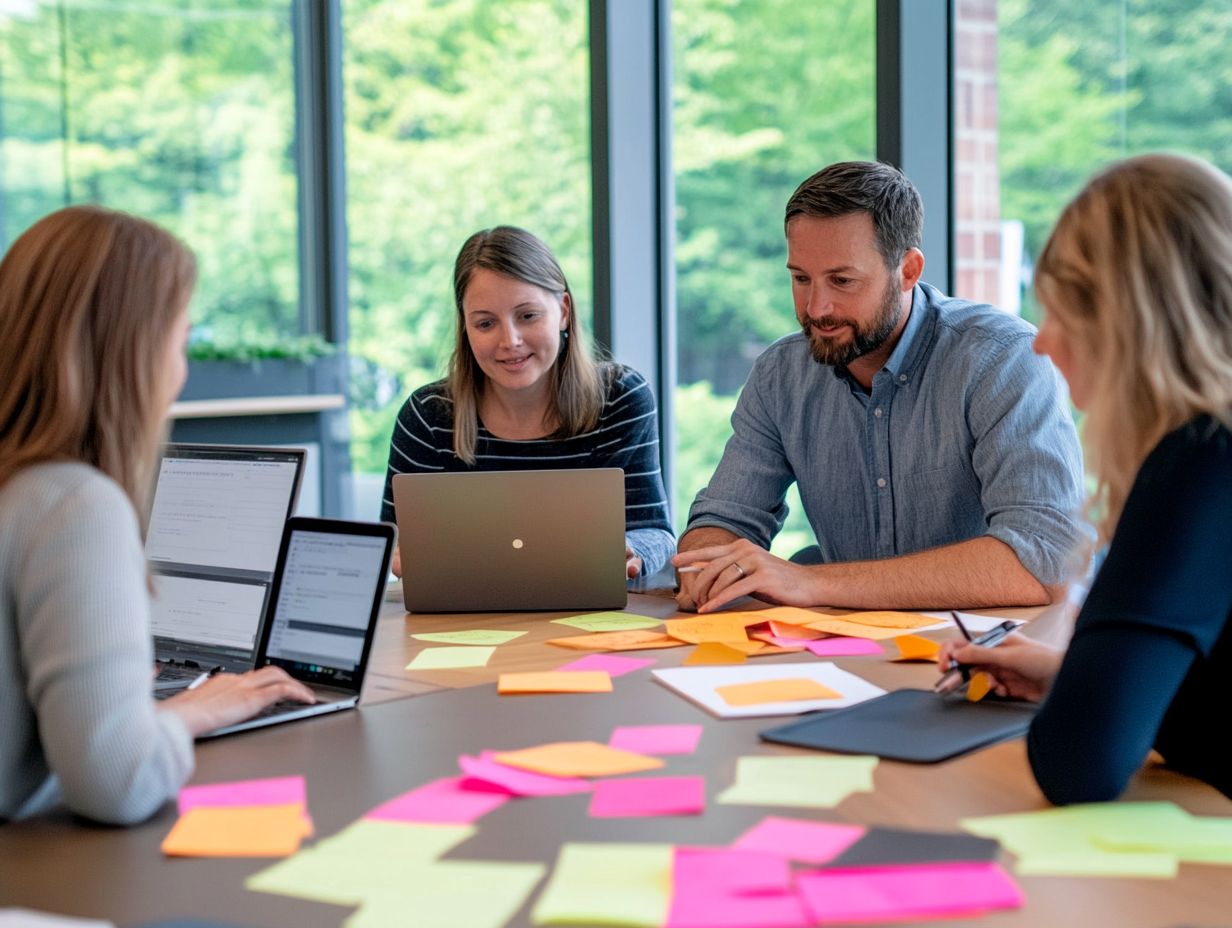
Dealing with creative blocks is an unavoidable aspect of your creative journey. Facing them directly can open the door to overcoming challenges and achieving remarkable results.
To navigate these hurdles effectively, consider implementing structured feedback sessions. Seeking input from peers can ignite fresh perspectives that help your ideas flow freely.
Engaging in alternative brainstorming techniques like mind mapping or free writing can dismantle those mental barriers that often hold you back.
Incorporating regular breaks is also essential; it rejuvenates your mind and allows for greater clarity and insight when you return to your project.
Ultimately, these strategies not only help you overcome creative obstacles but also enhance your overall creative process, leading to innovative outcomes that may have otherwise remained undiscovered.
Measuring Success and Making Improvements
You can check the project’s impact and ensure clients are satisfied once you ve wrapped up a creative project. This process allows you to assess the project’s impact and check how well it did.
Evaluating the Project’s Impact
Evaluating the project’s impact requires analyzing client feedback and assessing project outcomes. This helps you uncover what worked well and what could use a bit of fine-tuning.
Gather insights from clients through surveys, interviews, or feedback forms. This gives you a comprehensive understanding of their experiences and expectations.
By actively engaging your stakeholders, you can elicit meaningful responses that illuminate both strengths and areas for enhancement.
Once you’ve collected the feedback, it s essential to analyze the data systematically. Use metrics and key performance indicators (measurable values that show how effectively you are achieving your business objectives) to gauge your success.
This assessment not only gives you the power to make informed decisions for future projects but also nurtures a culture of continuous improvement and accountability. This ensures that the lessons you ve learned are effectively woven into your future planning and execution.
Making Adjustments for Future Projects
Making adjustments for your future projects is super important! It allows you to apply lessons learned and refine project parameters based on past experiences.
Reflect on the outcomes, timelines, and resource allocations from previous initiatives. You can pinpoint what worked and where things fell short.
This introspection fosters a culture of continuous improvement, encouraging you and your team to suggest innovative strategies that align better with your goals.
Assessing stakeholder feedback and team dynamics can enhance collaboration and streamline workflows. Ultimately, this reflective practice not only guides your decision-making but also gives you the power to tackle new challenges with greater confidence and clarity.
Don’t wait! Start measuring your success today to unlock your full potential.
Frequently Asked Questions
What are the key steps to developing a successful creative project?
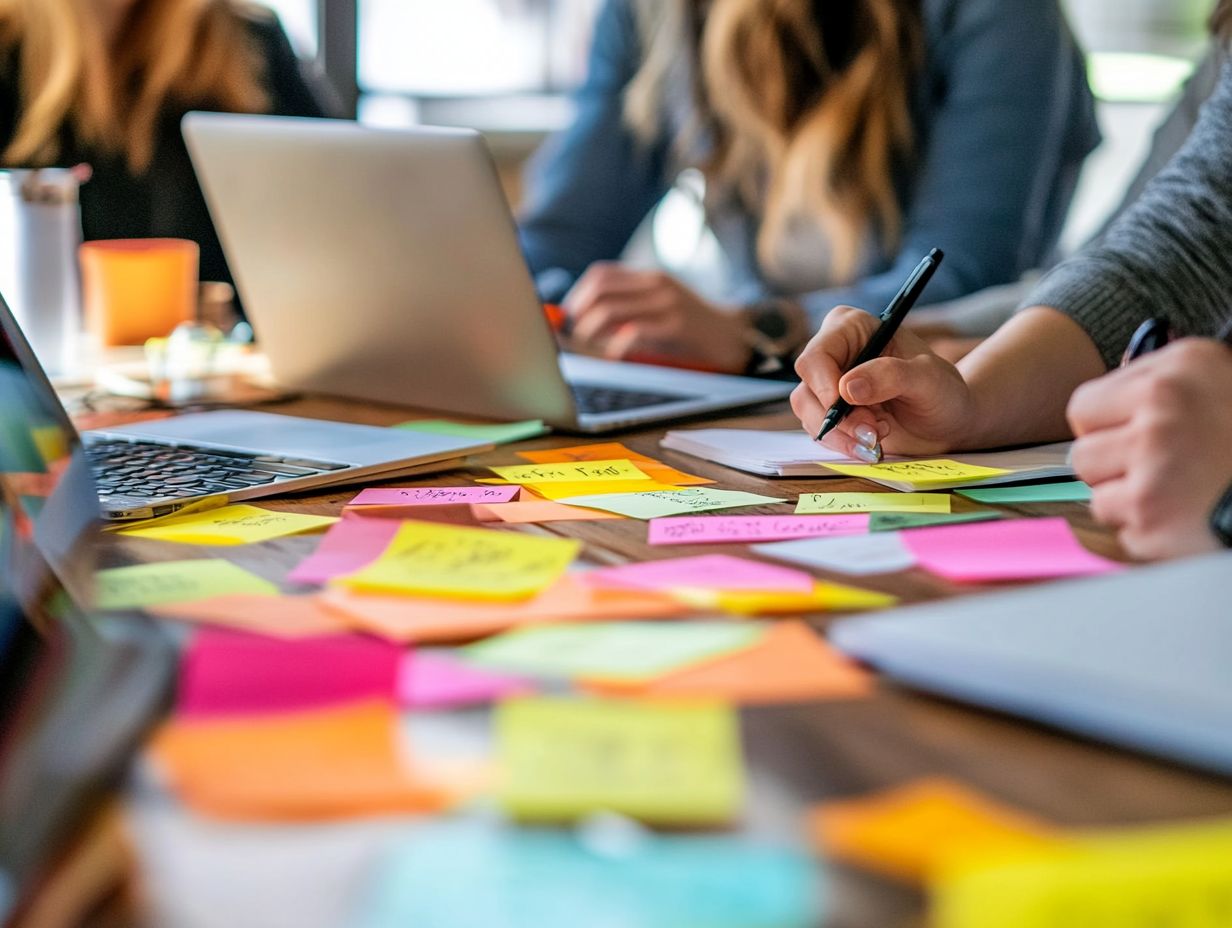
The key steps to developing a successful creative project are defining your project goals, conducting research and planning, establishing a timeline and budget, creating a team and delegating tasks, and executing and evaluating the project. To enhance your approach, consider exploring how to use mind mapping for creative projects.
How important is it to define the goals of a creative project?
Defining the goals of a creative project is crucial as it sets the direction and purpose of the project. It helps you stay focused and ensures that your project has a clear objective.
What are some effective ways to conduct research for a creative project?
Some effective ways to conduct research for a creative project include conducting surveys, analyzing market trends, researching your target audience, and seeking inspiration from other successful projects.
Why is it important to establish a timeline and budget for a creative project?
Establishing a timeline and budget for a creative project helps you stay organized and on track. It ensures that you have enough time and resources to complete the project successfully and within your budget.
How do you create a team for a creative project?
Start by identifying the skills and roles you need for the project.
Reach out to individuals with those skills, and ask your network for referrals or use online platforms to find team members.
How do you ensure the success of a creative project?
Effective communication is key. Keep everyone informed and check how the project is doing regularly.
Be ready to make changes if things aren t going as planned. Celebrate milestones and recognize your team s hard work throughout the journey.

